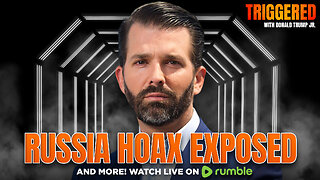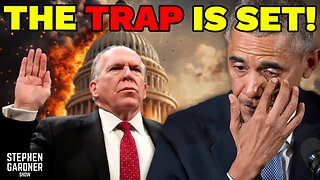Premium Only Content

To the accused fascist's bloody world of lunatic's criminals.
THE DIFFERENCE BETWEEN ETHNIC CLEANSING AND GENOCIDE The United Nations (U.N.) first termed ‘genocide’ in the Convention on the Prevention and Punishment of the Crime of Genocide, while ‘ethnic cleansing,’ on the other hand, is not recognized as a crime under international law (United Nations Office on Genocide Prevention and the Responsibility to Protect).
The lines between the ethnic cleansing and genocide can become blurred; however, when it comes to the international community taking action to mediate in a crime, the difference between ethnic cleansing and genocide needs to be understood.
Genocide
Genocide, in the Convention, means “any of the following acts committed with intent to destroy, in whole or in part, a national, ethnical, racial, or religious group, as such:
Killing members of the group;
Causing serious bodily or mental harm to members of the group;
Deliberately inflicting on the group conditions of life calculated to bring about its physical destruction in whole or in part;
Imposing measures intended to prevent births within the group;
Forcibly transferring children of the group to another group.”
Therefore, under international law, genocide is a punishable crime. Any person found guilty of carrying out genocide will be tried by a tribunal of the state where the genocide was committed or an international tribunal.
Ethnic Cleansing
Ethnic cleansing is the process of removing particular groups from a specific area based on race, nationality, religion and other identifying principles.
While ethnic cleansing doesn’t, by definition, involve the intent to kill a group, the resettlement of said people typically results in the loss of lives; genocide, however, focuses on the “intent to destroy.”
Ethnic cleansing is considered a crime against humanity. It has not been written and signed in any U.N. treaty, which means Member States do not have to protect those who have fallen victim.
Critics of the terms “ethnic cleansing” and “genocide” say that many state governments will use the initial phrase — even in incidents that could arguably be classified as genocide — in order to escape the necessity of using state resources and taking action against the perpetrating nation.
Responsibility to Protect
International law, in general, is a tricky topic when it comes to holding perpetrators accountable and protecting human rights. However, there is discussion on the national and international level (especially within the U.N.) to improve global law enforcement mechanisms.
The Responsibility to Protect (R2P) doctrine says that “if a state is unable to protect its own population from “genocide, war crimes, ethnic cleansing and crimes against humanity” then the internationality community must do something.”
R2P was adopted at the World Summit in 2005. It aims to hold member states accountable for the equal and moral protection of their own populations and all populations at risk of genocide and other mass atrocity crimes.
Discussion is increasing to meet the needs of millions of individuals that have suffered (and are suffering) from ethnic cleansing and genocide in the world today.
-
 LIVE
LIVE
SpartakusLIVE
1 hour agoDuos w/ @GloryJean || #1 Masculine Muscle MASS sears YOUR retinas with MIND BENDING content
157 watching -
 56:41
56:41
Donald Trump Jr.
4 hours agoLies, Leaks, and Lawfare: Censorship Corruption Exposed | TRIGGERED Ep.263
87.8K93 -
 LIVE
LIVE
Mally_Mouse
3 hours agoLet's Hang!! -- P.O. Box & Chill!
65 watching -
 1:02:37
1:02:37
BonginoReport
4 hours agoKamala Teases Book About Dumpster Fire Campaign - Nightly Scroll w/ Hayley Caronia (Ep.102)
28.5K33 -
 35:05
35:05
Stephen Gardner
3 hours ago🔥Obama will be FORCED to Testify in Trump trial?
3.95K20 -

Tundra Tactical
1 hour agoTundra Tactical Political Memes Review!
9 -
 LIVE
LIVE
GloryJean
1 hour agoDuos w/ Spartakus 🔥 LOCK IN for Games w/ PASSION
14 watching -
 LIVE
LIVE
Sgt Wilky Plays
1 hour agoSniper in the bushes
27 watching -
 LIVE
LIVE
Kimberly Guilfoyle
4 hours ago"Burns Bags" at FBI, What's Next? Interview with Former Agent John Nantz | Ep242
586 watching -
 LIVE
LIVE
RamrodJenkins
2 hours agoI'm HYPED for BF6 so let's play some 2042!
20 watching